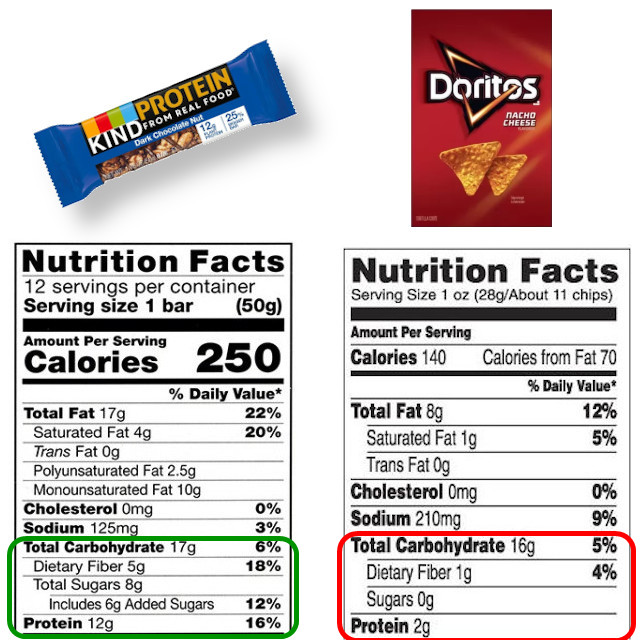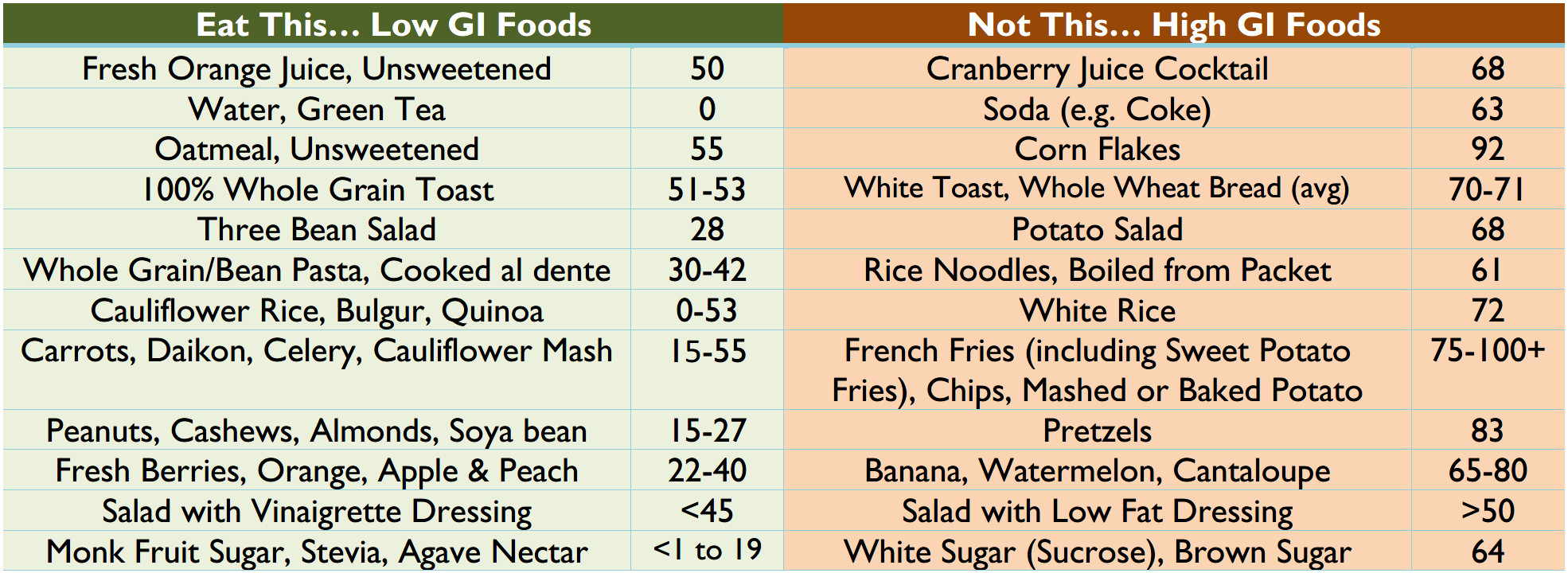Why is the right nutrition so important?
- Get results faster with minimal effort – lose fat and/or gain lean muscle mass
- Improve recovery after exercise – minimize muscle soreness, increase energy levels & minimize fatigue
9 Guidelines to Live By…
1) Manage your calories
The Golden Rule for For weight loss:
| Calories Consumed | < | Basal Metabolic Rate + Calories Burned from Physical Activity |
The most important factor is to burn more calories than you consume on a daily basis. To lose just 1 lb of fat per week, you need to burn an extra ~3,500 calories per week (or 500 calories per day). An average person burns ~ 300-500 calories per hour of moderate-intense exercise, so you can understand why getting 45-60 mins of vigorous exercise at least 4-6 times per week should be the goal.
 |
TIP: I do recommend using a tool like MyFitnessPal at least for 1 week to get an idea of your calorie intake versus expenditure, and macronutrient balance. Check it out at http://www.myfitnesspal.com |
2) Eat meals with the right balance of protein, carbs & fat equally throughout the day
| Energy Nutrient | Recommended % of Daily Diet | Approximate Typical Daily Requirement (g/lb body wt) |
|---|---|---|
| Protein | 10-35% | 0.5-0.8 g/lb body wt |
| Carbohydrate | 45-65% (2-3X protein) | 2.7-4.5 g/lb body wt |
| Fat | 20-35% (~1X protein) | <1 g/lb body wt |
What does this translate to for you? Here’s a rough guide of protein and carb requirements by body weight:
| Body Weight (lbs) | Daily Protein Needs | Daily Carb Needs |
|---|---|---|
| 100 | 50-80g | 270-450g |
| 110 | 55-88g | 297-450g |
| 120 | 60-96g | 324-540g |
| 130 | 65-104g | 351-585g |
| 140 | 70-112g | 378-630g |
| 150 | 75-120g | 405-675g |
| 160 | 80-128g | 432-720g |
| 170 | 85-136g | 459-765g |
| 180 | 90-144g | 486-810g |
| 190 | 95-152g | 513-855g |
| 200 | 100-160g | 540-900g |
| Note: For Fat Loss, Guideline #1 on Calorie Management takes precedence over the Carb & Protein Needs – with a bias towards meeting minimum Protein & Dietary Fiber needs while avoiding other Carbs as much as possible. Target Protein High Number to emphasize optimal Lean Muscle Gain. |
3) Make sure you are getting your minimum protein requirement
Make sure you get your daily requirement of quality lean protein of 0.5 to 0.8g per pound of body weight per day. Good sources include fish, chicken/turkey, grass fed lean red meat, legumes, egg whites, soy bean or tofu, and low fat Greek yogurt/cottage cheese.
 |
As a rough guide, each “deck of cards” sized portion of meat or dense protein contains approximately 20-25g protein. |
4) Make sure you are consuming the right carbohydrates
All calories are not created equal. Pick good quality carbs when you eat that are high in dietary fiber and generally low in Glycemic Index (GI), i.e. <55 on the GI scale, especially if you might be diabetic, prone to diabetes, or are eating late in the day well after your workout. Good sources of fiber include beans, whole grains, nuts, seeds, berries, fresh corn, and cruciferous vegetables. If your goal is to lose fat, avoid soda, rice, bread, white potato, and processed sugar/flour products.
| Daily Fiber Requirements | ≤ 50 Years Old | ≥ 51 Years Old |
|---|---|---|
| Men | 38g | 30g |
| Women | 25g | 21g |
| Why does GI matter? Glycemic Index is a measure of the rate at which carbs you eat raise your blood sugar (or glucose level). Unless you are heading out to run a marathon, there is no need to spike your blood sugar. In fact, any excess blood sugar that is not burned off results in accumulation of fat! For additional reading on Glycemic Index, check out: http://www.lowglycemicdiet.com/ |
| Read labels for your snacks, cereals, etc. and make sure they have at least 3g dietary fiber and less than 15g sugar per serving. Also, generally choose foods that have less than 2-3X Net Carbs to Protein Ratio. |
Net Carbs = Total Carbohydrates, less Dietary Fiber
| Calculating Net Carbs | Kind Protein Bar versus Doritos Chips |
| In the examples to the right, the Kind Protein Bar has Net Carbs = 17 – 5g = 12g which is just 1X Protein, whereas a bag of Doritos Chips has Net Carbs = 16 – 1g = 15g or 7.5X Protein! The Kind Protein Bar would be a much better food or snack choice for weight loss. |  |
5) Eat fats that give something back
Some fat is essential for cellular repair, proper brain function, blood sugar regulation, and vitamin transport and absorption. In particular, you need adequate Omega3, e.g. those found in nuts, seeds, fish/fish oil, olive oil, and avocado. You need at least 1-3g/day of EPA/DHA which is found in Omega3. Avoid saturated fats, trans fats and excessive Omega6 fatty acids (e.g. animal fats, full-fat dairy foods, and hydrogenated fat-based margarine, shortening, and fast foods).
6) Eat moderate sized meals throughout the day (but stop at least 2-3 hours before going to bed)
Ideally within 60 minutes of waking, within 45 minutes of exercise, and generally every 3-4 hours within your calorie target (i.e. 5-6 smaller meals per day is better than 2-3 bigger meals).
| In general, don’t skip meals! It could actually cause you to gain fat. When you do not eat for prolonged periods of time, your body may go into “starvation mode” and your metabolism slows to conserve energy (thereby burning fewer calories than normal). When you do finally eat, you might also have a tendency to overeat or consume bad carbs and your body tries to store more calories as fat during this starvation mode. 4 |
A great way to start your day would be with a Greek Yogurt Smoothie.
| Post-Exercise Recovery: You should consume a combination of protein and carbohydrates within 45 minutes of any moderate-intense workout to avoid or minimize muscle soreness, fatigue and low energy. In fact, especially during this period, your body is uniquely able to convert more carbs into glycogen in your muscles and liver for replenishment and storage, thereby helping to ignite muscle repair and protection, and keep you adequately fueled. Target 20-25g of protein (preferably fast-digesting protein like whey) and 2-3X that amount in carbs. 5 |
 | Low GI Snack Recommendations: • Nonfat Greek yogurt or cottage cheese with berries or pomegranate seeds, and a drizzle of agave nectar or honey • Soy beans (edamame) • Nuts (peanuts, pistachio, almonds, etc.) • Sweet potato or whole grain chips with hummus • Low Net Carb Protein Bar |
7) Stay Hydrated
Drink plenty of water or other non-caloric beverage as much as possible – avoid soda (even diet soda) if possible. You need at least 0.5-1 fl oz per pound of body weight per day.
| Body Weight (lbs) | Daily Base Water Needs |
|---|---|
| 100 | 6-13 cups |
| 110 | 7-14 cups |
| 120 | 8-15 cups |
| 130 | 8-16 cups |
| 140 | 9-18 cups |
| 150 | 9-19 cups |
| 160 | 10-20 cups |
| 170 | 11-21 cups |
| 180 | 11-23 cups |
| 190 | 12-24 cups |
| 200 | 13-25 cups |
- Drink an extra 2 cups of water per 1 hour of exercise. For intense exercises sessions, consider using a low calorie fluid with electrolytes (e.g. Natural Coconut Water, Vitamin Zero, etc.)
- For fat loss, drink an extra cup of water for every 25 pounds you carry above your ideal weight.
 |
To help you get to your daily water consumption target – especially for weight loss – try to make a habit of drinking 2 cups of water as soon as you wake up, and 2 cups about 30-60 minutes before every meal. 6 |
8) Eat a rainbow often (i.e. lots of fruit and vegetables)
…but preferably low GI fruit and vegetables (e.g. apples or berries instead of melons, and carrots or yams instead of potatoes.)
9) Make sure you take a good quality multivitamin supplement.
Vitamin deficiencies or excesses might be the cause of a number of undesirable effects including metabolic disorders, fatigue, irritability, depression, allergies, skin conditions, and so on. For details on specific additional supplements to take or avoid, check with your doctor or dietitian (e.g. your blood panel may indicate the need for additional specific supplements like calcium, Vitamin D, etc.)
References
- Source: Based on general nutrition recommendations for average adults per National Academy of Sports Medicine.
- Source: Institute of Medicine, 2012
- Source: GI values are estimates for typical serving sizes compiled from Harvard Health Publications and/or The University of Sydney glycemicindex.com website.
- Source: Heather Reese, RD, as published on HealthCentral.com, Jan 4, 2007.
- Source: Amanda Carlson-Phillips, MS, RD & Keith B. Wheeler, Phd, PACSM
- Source: Per Dr. Michael Picco, M.D., Mayo Clinic, April 19, 2012: “There’s no concern that water will dilute the digestive juices or interfere with digestion. In fact, drinking water during or after a meal actually aids digestion…”


